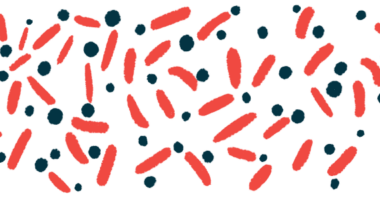Allergies to Beta-lactam Antibiotics Most Common Type in CF Children

Allergies to beta-lactam antibiotics were the most commonly confirmed antibiotic allergy in children with cystic fibrosis, according to a small study in Turkey.
Sensitivity to multiple types of antibiotics occurred in one-third of children with an allergy, data showed.
Having an immediate reaction to a medication and an allergy test in the first six months after a reaction were associated with a higher risk of a confirmed antibiotic allergy among children with allergy-like symptoms.
“We showed that a history of an immediate reaction was significant in predicting antibiotic allergy and thus we propose that an allergic assessment in the first 6 months after the reaction was crucial for diagnosis,” the researchers wrote.
The study, “Antibiotic allergy in children with cystic fibrosis: a retrospective case-control study,” was published in Pediatric Pulmonology.
The characteristic buildup of thick, sticky mucus in the lungs of CF patients makes them more susceptible to respiratory infections. Such infections are typically treated with antibiotics and choosing an appropriate one is critical for ensuring proper care.
But some CF patients develop allergies to certain antibiotics. Studies have reported that about 30% of children with CF have suspected allergies to beta-lactam antibiotics — such as penicillin — compared with about 10% of children in the general population. A need for high doses and long-term exposure may be among the reasons for this increased susceptibility.
As some children may also have allergies to other classes of antibiotics, it’s critical to thoroughly evaluate which children are at risk for allergies in order to find safe alternatives to treat infections.
A research team in Turkey investigated risk factors for antibiotic allergies among children with CF who were tested for a suspected antibiotic allergy and followed them between May 2008 and September 2021.
A total of 60 children were included in the analysis. Fifteen children, with a median age of 13, had a confirmed antibiotic allergy, while the remaining 45 (median age, 12) did not have such allergies despite being evaluated for a suspected reaction. They served as controls.
The median follow-up time between a CF diagnosis and a suspected antibiotic allergy was 12 years in allergic patients and 10.2 years in controls.
About half the children with an allergy (46.7%) and those without (51.1%) had the F508del mutation in the CFTR gene — the most common CF-causing mutation. The occurrence of chronic infection with Pseudomonas aeruginosa, a type of bacteria, was similar between groups, occurring in 80% of patients with allergies and 75.6% of the controls.
Among those with allergies, eight were allergic to a beta-lactam antibiotic, namely five cases of allergy against ceftazidime and three against piperacillin-tazobactam. Two children were allergic to a non-beta lactam antibiotic, specifically azithromycin and ciprofloxacin.
The remaining five children had multiple drug hypersensitivity, meaning they were allergic to at least one beta-lactam type medication and one other type of antibiotic.
One patient with multiple drug hypersensitivity had a sequential reaction, meaning it spanned the transition between a first and second medication. The remaining four children had separate reactions to the two medications, occurring after a long interval.
All children with allergies were tolerant to amoxicillin, amoxicillin clavulanate, and meropenem, the researchers noted.
Most children who tested positive for allergies (80%) had an immediate allergic reaction — within an hour of taking the medication, compared with 11.1% of children in the control group. Reactions in allergic patients included anaphylaxis — a severe reaction causing airway closure — hives, and skin eruptions.
Immediate allergic reactions to a medication and having an allergy test in the first six months after a reaction were significant risk factors for a confirmed antibiotic hypersensitivity, final statistical analyses indicated.
The findings show beta-lactam antibiotics account for most allergies in CF children and immediate reactions are linked to the likelihood of a confirmed allergy diagnosis.
The reactions observed in children who ultimately did not have a confirmed allergy could be due to side effects of other medications or interactions between medications. It’s also possible that, while these children were acutely sensitive to an antibiotic, that sensitivity passed over time, the researchers said.








